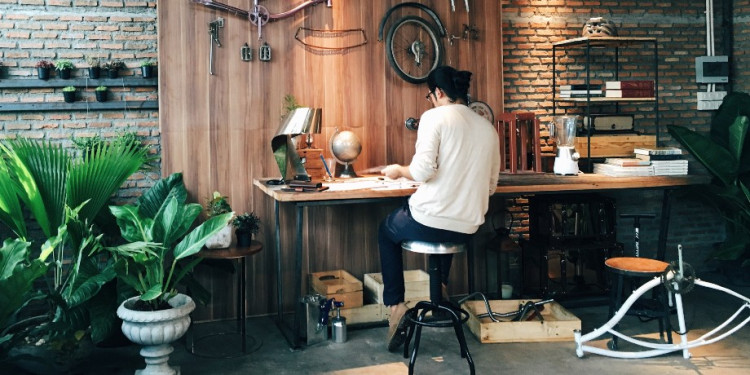
The way we live and work has been permanently changed by the pandemic – more of us are working from home and more businesses are embracing a ‘distributed workforce’.
Both bosses and workers have seen the advantages of remote working, with its flexibility and cost-saving potentials.
In a 2020 survey, 89% of Kiwis who worked from home during lockdown said they’d like to continue at least part of the time.
If you are able to keep working from home, you need a space to work. How can you make this happen?
Identifying a space to work
A home office can range from simple and cheap – a desk in the corner of a room – all the way through to complex and expensive – like a custom extension.
Assuming you’re staying within the footprint of your existing house to create a workspace, the first step is to identify a potential space, says Paul Raven, Principal at architects Stephenson & Turner.
Try to think beyond the current layout and consider the entire footprint of your space – which rooms or storage spaces are underutilised?
Could you move your laundry appliances to a shed and reclaim it as an office? Or can you redesign your living room to create an office space?
“It could even be in the garage or garden shed,” says Raven. “The garden can be one of the best spaces because you have lots of oxygen and you can contemplate.”
No garden shed? There’s always the option of a portable cabin if you have an accessible bit of lawn, which has the upside of being both separate and removable.
Giving yourself some flexibility
It can be helpful to have more than one potential location for work, particularly if it’s hard to carve out a dedicated office space with a door.
By switching from your office area to the kitchen table, deck or garden, you can change your outlook and kickstart your motivation.
Multi-function furniture is a great way to make spaces more adaptable, says Raven. A pop-up desk can pack away at weekends, while a fold-down desk fits into the shelving or against the wall when you don’t need it.
You can wheel a workspace trolley into a wardrobe when space is tight, and use a desk lamp that doubles as a USB port.
“It’s very easy to find a corner, and you can be mobile within the house – I can’t sit still, so that’s how I work within my own house, instead of having a separate study space.”
Add your personal touches
Finally, don’t forget to make the space feel like your own, adds Raven: “It’s the simple things that make it yours – a nice pot plant and items you feel good about. It’s important to claim your space and personalise it.”
Related articles:
